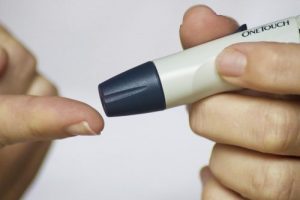- Home
- Editorial
- News
- Practice Guidelines
- Anesthesiology Guidelines
- Cancer Guidelines
- Cardiac Sciences Guidelines
- Critical Care Guidelines
- Dentistry Guidelines
- Dermatology Guidelines
- Diabetes and Endo Guidelines
- Diagnostics Guidelines
- ENT Guidelines
- Featured Practice Guidelines
- Gastroenterology Guidelines
- Geriatrics Guidelines
- Medicine Guidelines
- Nephrology Guidelines
- Neurosciences Guidelines
- Obs and Gynae Guidelines
- Ophthalmology Guidelines
- Orthopaedics Guidelines
- Paediatrics Guidelines
- Psychiatry Guidelines
- Pulmonology Guidelines
- Radiology Guidelines
- Surgery Guidelines
- Urology Guidelines
Marine snail venom source of faster acting insulin for better blood sugar control

The scientists have found that venom of marine cone snails may be a source of insulin with better blood sugar control in future.Insulin is a hormone that is responsible for allowing glucose in the blood to enter cells, providing them with the energy to function. A lack of effective insulin increases blood sugar and plays a key role in the development of diabetes.
Insulin derived from the venom of marine cone snails may pave the way for a faster-acting drug to treat diabetes, scientists say. Although moderately mobile, marine cone snails have perfected several strategies to capture prey. Some fish-hunting species release venom into the surrounding water. Within the plume of toxic venom, the fish succumbs to fast-acting insulin that renders it immobile. As the fish flounders, the snail emerges from its shell to swallow the pacified victim whole. Researchers at University of Utah in the US detailed the function of cone snail insulins, bringing them one step closer to developing faster-acting insulin to treat diabetes.
“These snails have developed a strategy to hit and subdue their prey with up to 200 different compounds, one of which is insulin,” said Helena Safavi-Hemami, assistant professor at University of Utah. “Every now and then, we learn something unique from nature and millions of years of evolution,” said Safavi-Hemami.
Insulin, a hormone produced by the pancreas to regulate blood sugar, consists of two segments called A and B chains. The B cluster forms dimers and hexamers that allow the pancreas to store the hormone for later use. This segment is also necessary to activate the insulin receptors that signal the body to take up sugar from the blood. Insulin must undergo several conversions to declutter before it can lower blood sugar.
A person with type 1 diabetes is unable to produce insulin and requires daily injections to manage their blood sugar. Despite decades of research, the manufactured insulin continues to contain the B chain in order to activate the receptor to lower blood sugar, delaying the drug’s effect by 3090 minutes. Researchers examined the function of seven insulin sequences found in the venom from three species of cone snail Conus geographus, C tulipa, and C Kinoshita. Unexpectedly, each species produces insulin with slightly different structures. Despite these differences, each insulin is fast-acting because it lacks the sticky part of the B chain found in human insulin.
“Evolution may be the driving force to increase the molecular diversity of the toxin molecules that the cone snail species use for hunting prey,” said Danny Hung-Chieh Chou, assistant professor at University of Utah. The team tested how each of the insulin sequences lowered blood sugar in zebrafish and mice. The model animals were treated with streptozotocin to induce symptoms of type 1 diabetes before the animals were dosed with the different synthesized insulins.
Researchers found three of the venom-generated insulin sequences (Con-Ins T1A from C tulipa, Con-Ins G1 from C geographus and Con-Ins K1 from C kinoshitai) lowered blood sugar effectively. Using cell lines, they found the cone snail insulin sequences were able to bind to and activate the human insulin receptor, despite missing the part of the B chain found in human insulin. These sequences, however, are 10 to 20 times less potent than human insulin. Each unique configuration provides the research team a slightly different template to consider when designing new drugs that act quickly and effectively.

Disclaimer: This site is primarily intended for healthcare professionals. Any content/information on this website does not replace the advice of medical and/or health professionals and should not be construed as medical/diagnostic advice/endorsement or prescription. Use of this site is subject to our terms of use, privacy policy, advertisement policy. © 2020 Minerva Medical Treatment Pvt Ltd